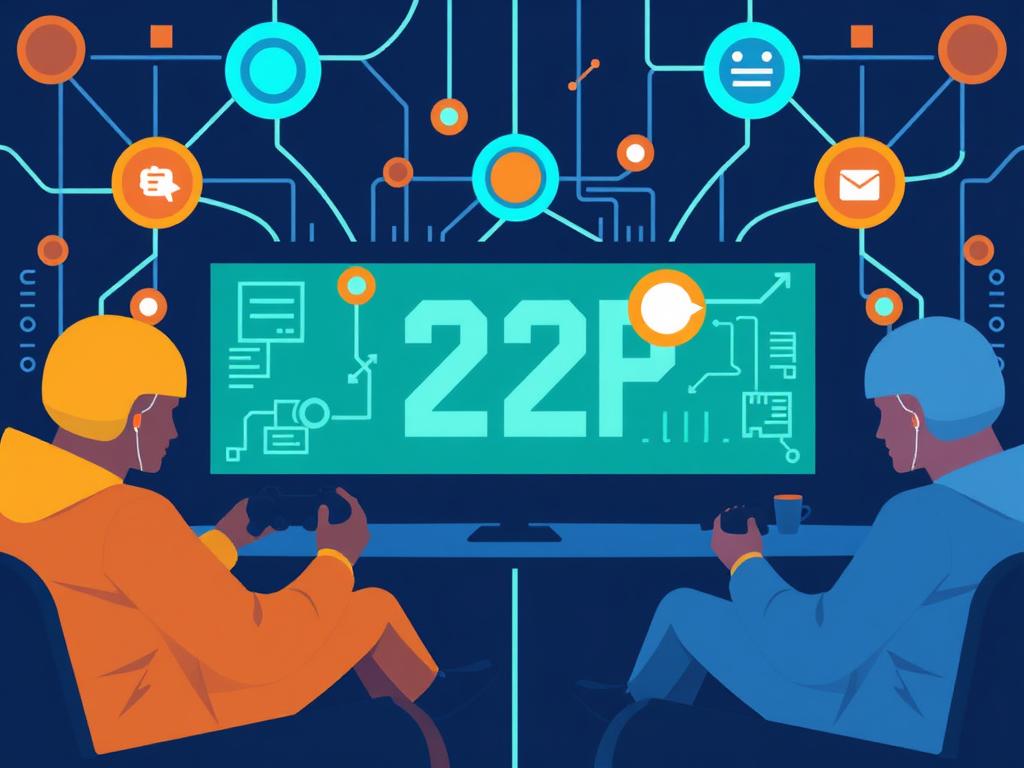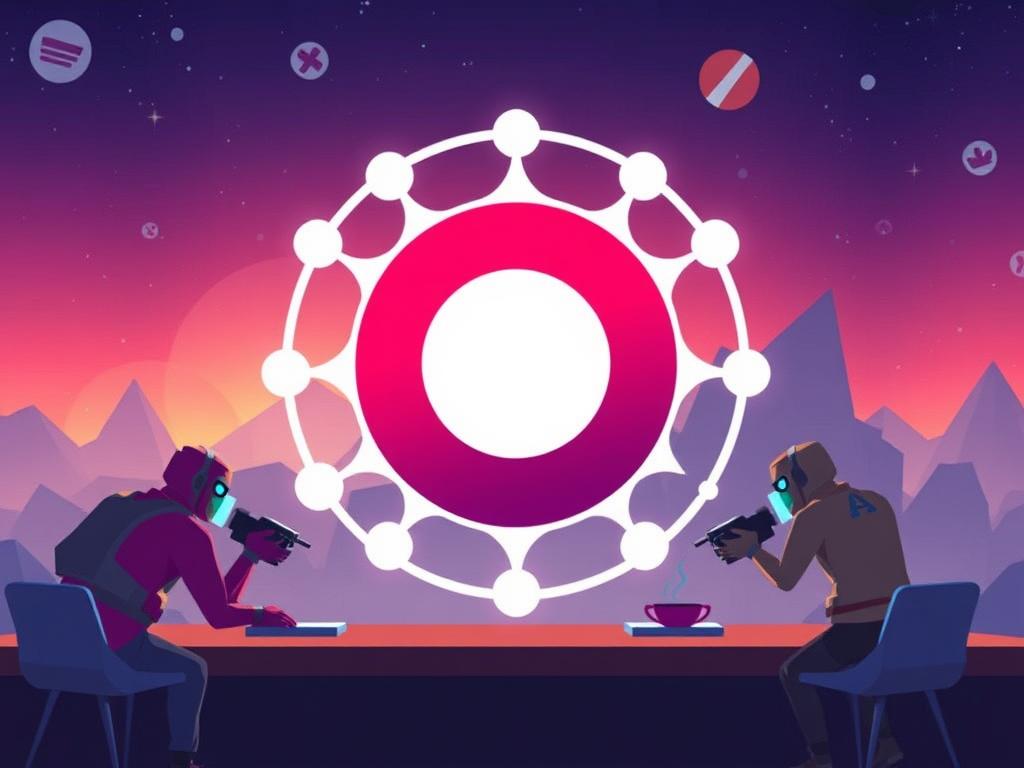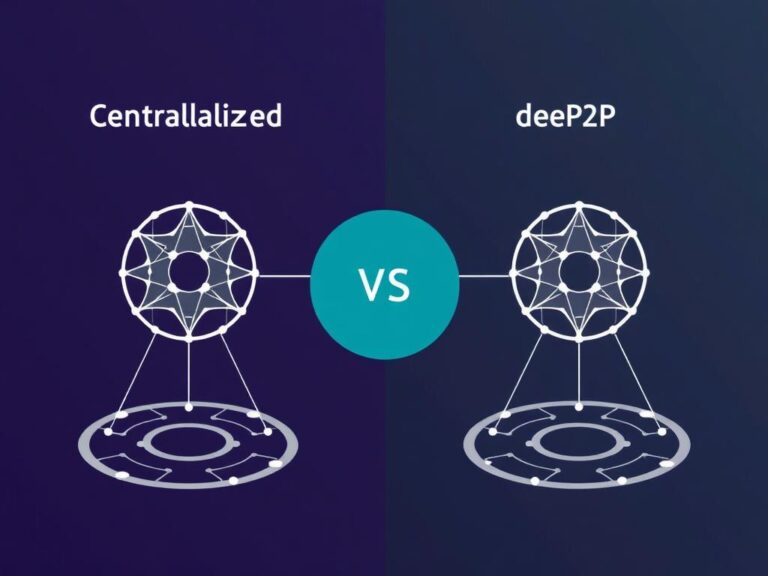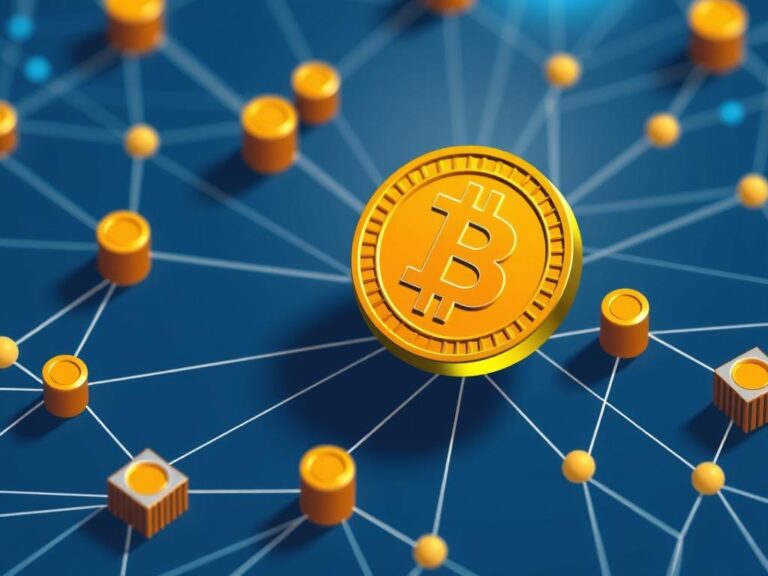P2P Gaming: How Multiplayer Games Use Peer Networks to Enhance Gameplay
Understanding Peer-to-Peer Gaming and Its Rise
Peer-to-peer (P2P) gaming has become a fascinating development in the world of multiplayer games, offering a unique way for players to connect directly without relying entirely on central servers. In simple terms, P2P gaming means that each player’s device communicates directly with other players’ devices, creating a network where data flows between peers rather than passing through a centralized hub. This approach has gained traction as games become more sophisticated, and players demand faster, more immersive experiences. But how exactly do multiplayer games use peer networks? And why has P2P gaming grown in popularity? Let’s break it down.
Traditional multiplayer games often depend on powerful servers controlled by the game developers or hosting companies. These servers process all game data, from players’ movements to in-game events, ensuring a synchronized experience for everyone. While this model is effective, it brings challenges like server maintenance costs, potential bottlenecks, and limited scalability. Enter peer networks. By distributing the workload among the players’ devices, P2P gaming alleviates some of these issues. Not only does it reduce the strain on dedicated servers, but it can also decrease latency and improve game responsiveness.
How Peer Networks Work in Multiplayer Games
At its core, a peer network in a multiplayer game connects the players directly, enabling the exchange of information like player positions, actions, and game state updates. Instead of sending all data to a single server, each peer communicates with other peers in the match. This system resembles a web where every node (or peer) talks to several others. Here’s how the process typically unfolds:
- Connection Setup: When a multiplayer game starts, a matchmaking system or lobby gathers players and establishes a peer-to-peer network among them.
- Data Exchange: Each player’s device sends updates (like movement, firing weapons, or object interactions) directly to other connected peers.
- Game State Synchronization: The peers arrange to keep their versions of the game world consistent by exchanging state information regularly.
- Conflict Resolution: When discrepancies arise—due to network delays or data loss—the network uses algorithms to resolve conflicts and maintain fairness.
One of the biggest advantages here is that by communicating directly, peer networks can reduce the latency that plagues some centralized server models. Players feel like the game is more responsive and immediate, which is especially important in competitive and fast-paced games.
Common P2P Topologies in Gaming
In multiplayer P2P systems, the structure of how peers connect is crucial. The two main topologies are the fully connected mesh and the partial mesh.
| Topology | Description | Pros | Cons |
|---|---|---|---|
| Fully Connected Mesh | Every player connects directly to every other player. | Low latency communication; simple to implement for small groups. | Scales poorly as number of players grows; high bandwidth requirement per peer. |
| Partial Mesh | Players connect to a subset of peers rather than everyone. | Better scalability; reduces bandwidth and processing burden. | More complex synchronization; potential for delayed updates. |
For example, casual P2P games with only a few participants often choose a fully connected mesh. However, larger scale multiplayer games implementing P2P may employ partial mesh networks to balance performance and scalability.
Benefits of P2P Gaming in Multiplayer Games

Why are many multiplayer games increasingly adopting P2P networks? Here are some compelling reasons:
- Reduced Server Costs: Instead of investing heavily in server infrastructure, game developers can offload networking load onto players’ devices.
- Improved Latency: Direct peer communication often means lower lag, which can be the difference between winning and losing in fast-paced games.
- Scalability: Peer networks can easily adapt to fluctuating player counts without needing expensive server expansion.
- Resilience: Without a single point of failure, the game can be more robust against server outages, allowing matches to continue smoothly if one peer drops out.
- Community Empowerment: Players often feel more engaged knowing their device contributes directly to the gameplay experience.
However, it’s not without its challenges. Because the network relies on individual players, issues like cheating, inconsistent connections, and security vulnerabilities can arise more frequently than in centralized systems.
P2P Gaming Challenges and How They’re Overcome
Even though P2P multiplayer games offer many benefits, they must address several technical and security challenges to deliver a smooth experience. Some typical issues include:
- Cheating and Exploits: Since data originates from various peers, malicious players could manipulate game data to gain unfair advantages.
- Network Stability: Players’ internet connections vary widely in speed and reliability, which can cause lag or desynchronization.
- Synchronization: Ensuring all players see the same game state despite network delays is a complex problem.
Game developers tackle these challenges through various strategies such as:
- Encryption and Validation: Using cryptographic methods to verify data integrity and authenticity.
- Host Peer Selection: Designating a trustworthy peer as a host or authority to coordinate game state and prevent cheating.
- Snapshot and Rollback Systems: Techniques that frequently save the game state and correct discrepancies by rolling back to a known correct version.
- Lag Compensation: Algorithms that predict player actions or smooth network interruptions for better gameplay.
Thanks to these innovations, P2P gaming is becoming increasingly viable for a wide range of multiplayer titles.
Popular Multiplayer Games Using Peer Networks
While many large-scale online games rely on dedicated servers, several well-known multiplayer games have embraced P2P networks either fully or in hybrid models. Here are some examples:
| Game Title | Use of P2P | Genre | Notes |
|---|---|---|---|
| Call of Duty Series | Peer-to-peer for many matchmaking multiplayer modes | First-person shooter | Often criticized for host advantage; uses host migration and anti-cheat |
| Among Us | P2P Networking for lobby and gameplay | Social deduction | Relies on player peers for data exchange, allowing smaller server costs |
| Minecraft (Bedrock Edition) | Local peer-to-peer LAN games | Sandbox | Enables multiplayer within local networks without a central server |
The choice to use P2P in these games highlights different trade-offs and benefits depending on gameplay, player count, and platform.
Hybrid Models: The Best of Both Worlds
Some multiplayer games combine peer networks with centralized servers to optimize performance and security. This hybrid approach might involve using P2P connections for high-speed in-game data transfer while relying on servers for matchmaking, anti-cheat verification, and persistence of player accounts and stats. This setup maintains many benefits of P2P while reducing its biggest drawbacks.
Looking Ahead: The Future of P2P in Multiplayer Gaming
With the evolution of internet connectivity, cloud gaming, and edge computing, P2P gaming stands at an exciting crossroads. Advances like 5G networks promise lower latency and more stable connections, ideal for robust peer networks. Meanwhile, emerging decentralized technologies such as blockchain may offer novel ways to secure and verify peer interactions, reducing cheating concerns.
Additionally, the growing popularity of indie games and small-scale multiplayer titles ensures that developers will continue exploring creative P2P uses. The ongoing improvement in networking protocols will make peer-to-peer multiplayer more reliable and accessible than ever before.
Summary Table: Advantages vs. Disadvantages of P2P Gaming
| Advantages | Disadvantages |
|---|---|
|
|
Conclusion
Peer-to-peer gaming represents a dynamic and innovative approach to multiplayer games, harnessing the power of peer networks to offer faster, more scalable, and cost-effective gameplay experiences. While challenges like security and synchronization remain, advances in technology and clever engineering continue to make P2P multiplayer more viable than ever. Whether in indie games looking to cut server costs or blockbuster titles seeking responsive gaming, P2P networking reshapes how players connect, compete, and collaborate. As the gaming landscape evolves, peer-to-peer gaming will undoubtedly play a crucial role in the future of immersive, social virtual worlds.






